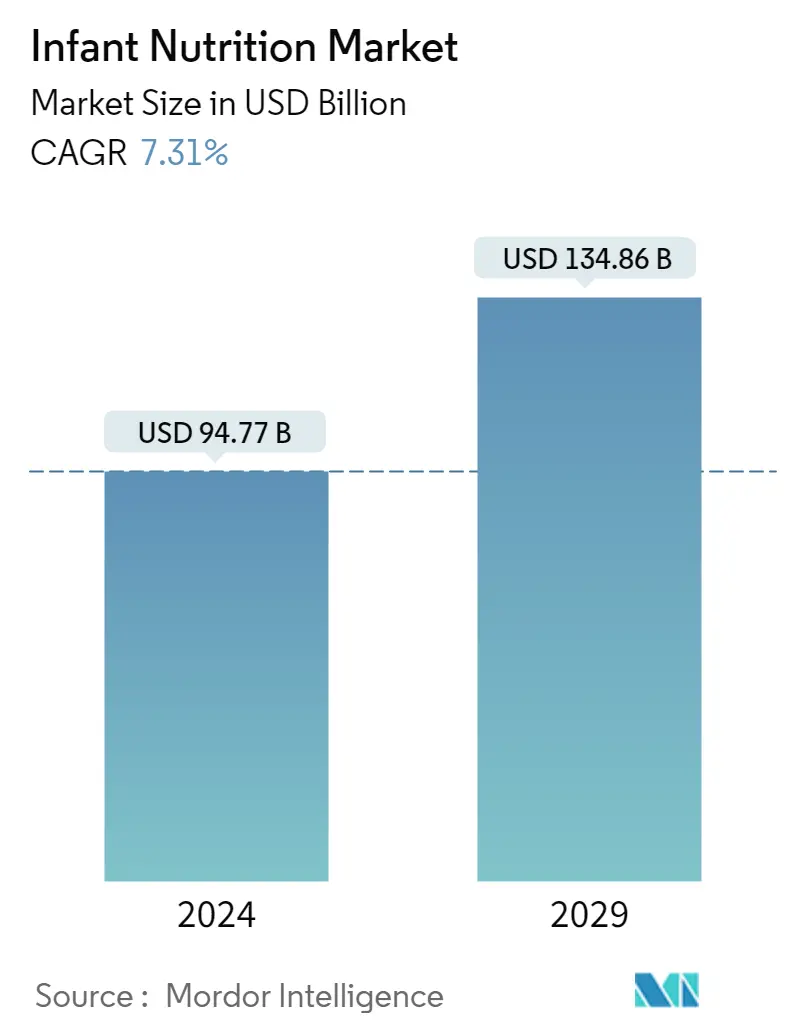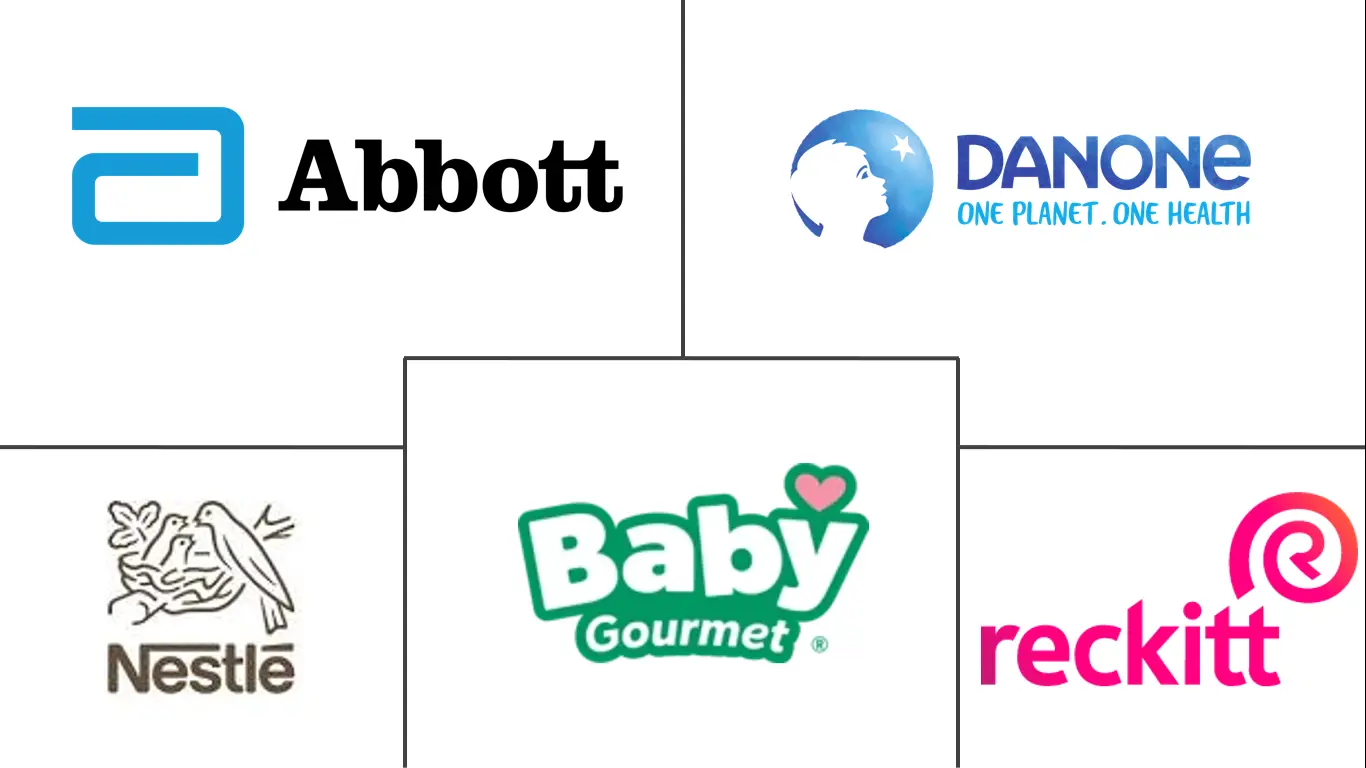Market Size of Infant Nutrition Industry

| Study Period | 2021 - 2029 |
| Market Size (2024) | USD 94.77 Billion |
| Market Size (2029) | USD 134.86 Billion |
| CAGR (2024 - 2029) | 7.31 % |
| Fastest Growing Market | North America |
| Largest Market | Asia Pacific |
Major Players
*Disclaimer: Major Players sorted in no particular order |
Need a report that reflects how COVID-19 has impacted this market and its growth?
Infant Nutrition Market Analysis
The Infant Nutrition Market size is estimated at USD 94.77 billion in 2024, and is expected to reach USD 134.86 billion by 2029, growing at a CAGR of 7.31% during the forecast period (2024-2029).
The rising cases of COVID-19 in the initial phase of the pandemic have had a short-term adverse impact on the export-import activities in the nutrition sector. The direct short-term impact on the nutrition sector was less prominent; however, the effect of COVID-19 on the global economy had a significant indirect influence on the nutrition-related divisions of several manufacturers. During COVID-19, healthcare facilities, market players, and the government invested heavily in maintaining the supply of essential nutrition and food. Most baby food manufacturers were found to focus on ramping up the production of baby food to ensure availability. The AAP in May 2020 also recommended that during the pandemic, people should buy no more than 10 days to two weeks' supply of formula to ensure its availability across the population. However, the post-pandemic era witnessed a substantial change in the consumer buying patterns of infant formula products. With the upsurge in e-commerce, tier three and four cities globally observed an increase in the uptake of infant nutrition products, thereby propelling the market's growth. Therefore, COVID-19 had an adverse effect on the infant nutrition market initially, but the growing initiatives after the pandemic are expected to boost the growth of the market over the forecast period.
Certain factors propelling the growth of the market include an increase in the working mother population, higher spending on baby health, and the rising demand for organic baby food. For instance, over the past few years, there has been a remarkable increase in the population of young working mothers. This has worked as a key factor in propelling the growth of the infant nutrition market, as these working mothers are heavily dependent on processed infant nutrition products. For instance, in the United Kingdom, the number of working mothers has increased to one of the highest levels in recent decades. In 2021, the Office for National Statistics (ONS) of the United Kingdom published data on families and the labor market. The data revealed that the number of mothers in the labor market had grown substantially over the last two decades. From April to June 2021, three in four mothers (75.6%) were working in the United Kingdom, reaching its highest level in the equivalent quarter over the last 20 years, up from 66.5% in 2002. In 2021, the employment rate for mothers (75.6%) was greater than that for women without dependent children (69.1%). The low wages and high cost of living in cities have increased the number of women working to support their families. Therefore, this factor plays a key role in driving the infant food nutrition market, as working mothers are primarily dependent on processed child nutrition products.
Stress is also currently one of the most common problems working women face, which causes low milk production in them. These factors have encouraged the adoption of convenience-oriented lifestyles, making infant formula and baby foods more desirable. Additionally, factors such as the growth of the middle class, rapid urbanization, and rising rates of female participation in the labor force in many developing markets have encouraged the adoption of convenience-oriented lifestyles, making prepared baby foods and baby formula more desirable.
The increasing middle-class population in emerging and developing countries has opened new horizons in the infant nutrition market, as the need for products compatible with a working mom's schedule is growing. However, increasing approval from the US FDA and product launches by key players are expected to boost the market. For instance, in January 2021, Timios launched its new category of "Made to Order Porridge" for infants and toddlers.
Similarly, in August 2022, Danone launched a new dairy and plant blend baby formula to meet parents' desire for more plant-based foods. Therefore, these factors are expected to boost the growth of the infant nutrition market.
However, concerns regarding food safety and stringent regulations for infant food are expected to hinder the growth of this market.
